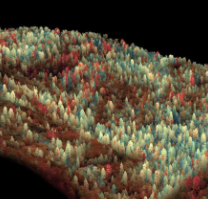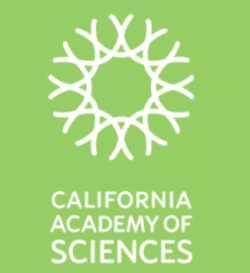In this silent video, view color-coded data which show how California’s trees were affected by drought in 2016.
A record-setting dry spell is transforming California’s forests—and in this case, colorful foliage is not a good thing.
Since 2011, the punishing, millennial-scale drought in California has done far more than turn lawns brown and raise water bills—it has also taken a severe toll on forests, killing more than 100 million trees and stressing tens of millions to the point that they might not survive another dry year. Scientists are able to tally these recent and imminent losses thanks to a high-tech flying laboratory operated by the Carnegie Airborne Observatory, which uses laser-guided spectroscopy to measure water loss in forest canopies.
The resulting data is color-coded as you might expect—the trees that appear blue are taking in the most water, while the trees that appear orange and red have been hit hardest by the drought. In this visualization of a forest in Sequoia National Park in August 2015, it’s possible to see that many giant sequoias (Sequoiadendron giganteum) are still relatively well hydrated. But others—especially those on the steepest slopes where water tends to run off most quickly—appear a deep shade of red, a clear sign that they are severely stressed by the drought conditions.
According to CAO founder Greg Asner, giant sequoia trees are faring relatively well compared to other California trees, including sugar pines (Pinus lambertiana) and black oaks (Quercus kelloggii). However, even these ancient giants—which have weathered many past droughts—are beginning to show signs of stress. Datasets like this are some of the best tools that forest managers have at their disposal as they attempt to safeguard these iconic trees for future generations. By prescribing burns in the most severely impacted areas to reduce competition for water from shrubs and smaller trees, they may be able to help the remaining sequoias access enough water to survive.





